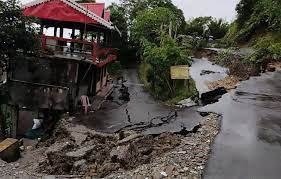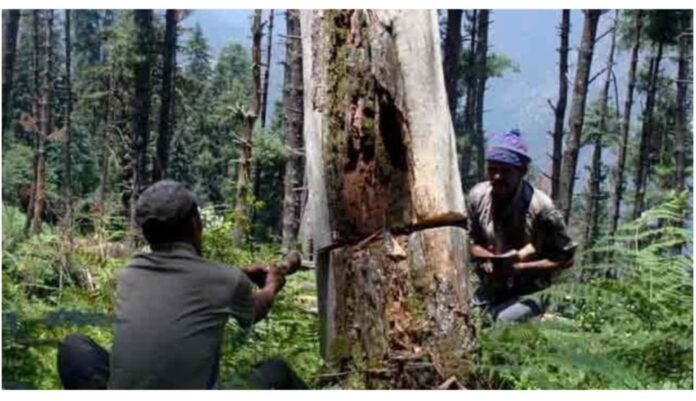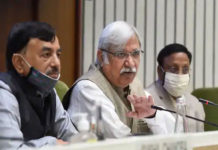BI News, Indian: It’s disheartening to learn that local fuelwood collection isn’t the primary cause of deforestation in the Himalayan tract. Instead, the staggering 30% deforestation over the past three decades can be attributed primarily to commercial harvesting and governmental mismanagement. This alarming trend raises concerns about the fragile ecosystem in this pristine region.
A decline of 902 square kilometres in forest cover was recorded in hill districts of the country as compared to 2019, found the State of Forest Report, 2021. The loss is much more pronounced in the Himalayan states that reported an overall loss of 1,072 sq km of forest cover.closer look revealed geographical disparities, with states in the northeastern region faring the worst.

Arunachal Pradesh (16 hill districts) has lost 257 sq km of forest cover with respect to the State of Forest Report 2019, Manipur (nine hill districts) has lost 249 sq km, Nagaland (11 hill districts) has lost 235 sq km and Mizoram (eight hill districts) has lost 186 sq km. Assam (three hill districts) has lost 107 sq km, Meghalaya (seven hill districts) has lost 73 sq km, Tripura (four hill districts) has lost four sq km, Sikkim (four hill districts) has lost 123 sq km.
On the other hand, Uttarakhand (13 hill districts), Himachal Pradesh (12 hill districts), Jammu & Kashmir (22 hill districts) and Ladakh (two hill districts) have gained two sq km, nine sq km, 29 sq km and 18 sq km, respectively.
There are only 35 billion trees in India to shade a population of 1.3 billion. Among highly populous countries, India (population, 1.267 billion) has a tree population of only 35 billion, leading to just 28 trees per person.
At the time of independence, India had approximately 700 trees per person. However, to balance the country’s biodiversity in accordance with its population, an estimated 140 billion trees are needed. This signifies the stark contrast between the existing tree count and the desired number required for a sustainable environment. The significant disparity calls for urgent action and initiatives to restore and enhance the green cover in India, as it plays a crucial role in maintaining ecological balance and preserving the nation’s natural resources.
There is probably no other area of India’s environment that has been more viciously attacked and destroyed in the last century than the country’s forests. The current rate of deforestation is placed well over one million hectares every year.
“Accused in Nithari Serial Killings, Moninder Singh Pandher, Released from Jail”
The rate of depletion of forests in the Himalayan ranges, which represent a quarter of C, is so immense that this mighty mountain chain could become bare by the first half of the next century.In the middle Himalayan belt, which rises to an average height of 3000m, the forest area, originally estimated as being a third of the total area, has been reduced to a mere six to eight per cent. The forests are not regenerating, therefore growing stocks have dwindled and most forests have been totally encroached upon and destroyed.
Sunderlal Bahuguna, the champion in the cause of environmental preservation rated the commercial exploitation of forests as the most powerful one. Another factor is the construction of roads without adequate soil conservation measures.
Controlling deforestation in Himalayan region necessitates a comprehensive approach involving sustainable land management practices, stronger legal frameworks, community – based forest management, reforestation and afforestation initiatives , awareness campaign, alternative livelihood options, international cooperation, research and monitoring ,addressing economic drivers, and climate change adaptation. Collaboration among the governments, local communities and international stakeholders is crucial in implementing these strategies to mitigate deforestation and project the valuable forest ecosystems of the Himalayas.










